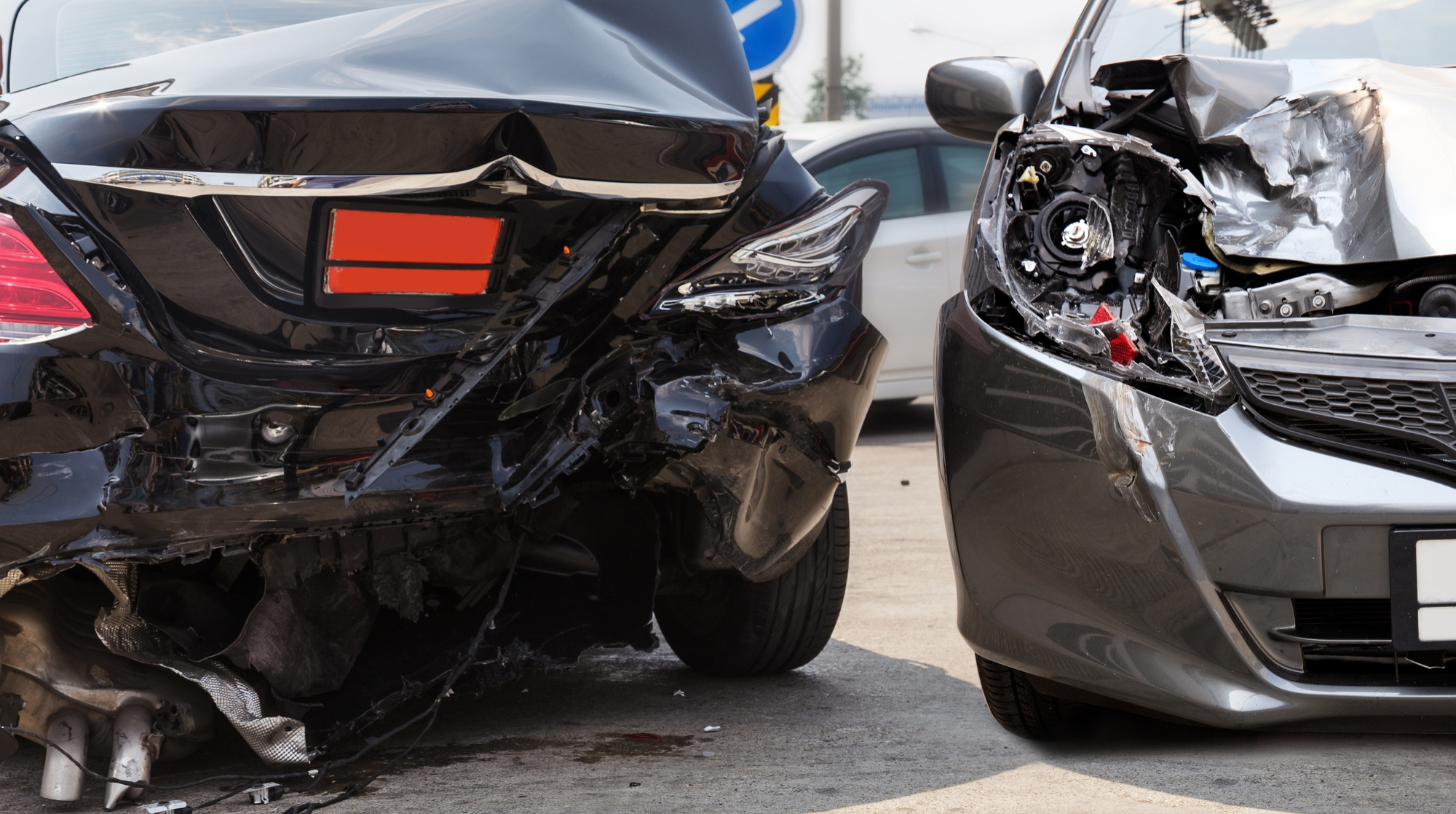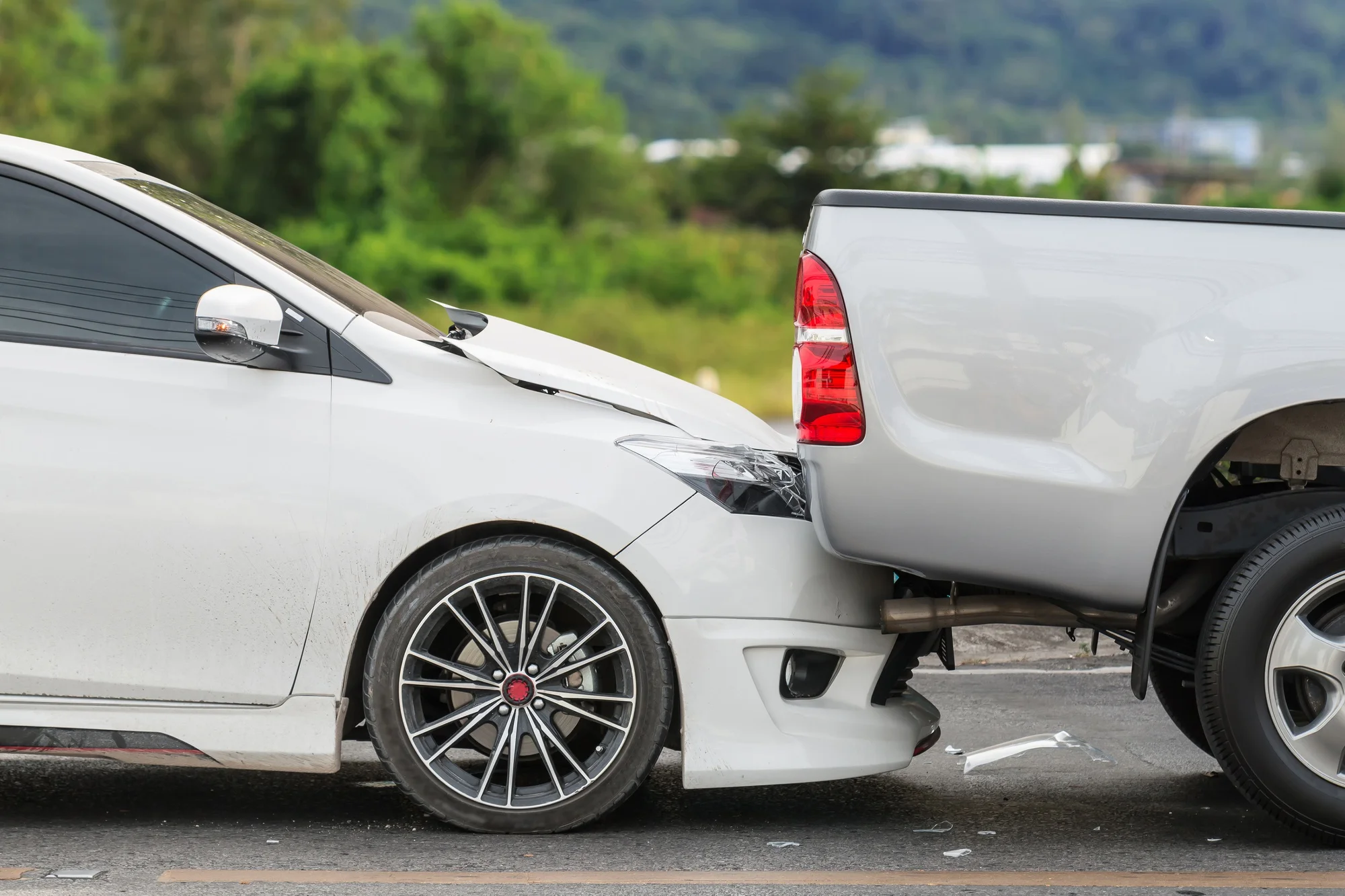Left turn collisions represent some of the most complex and potentially devastating traffic incidents on our roads today. When vehicles intersect during a left turn maneuver, the resulting impact often leads to significant injuries due to the challenging dynamics involved which include multiple lanes of traffic, varying speeds, and split second timing decisions. Successfully resolving a left turn accident case requires careful attention to several critical factors, including right of way laws, traffic conditions at the time of the incident, and the specific actions of both drivers involved. Understanding these elements and properly documenting the circumstances surrounding the collision can significantly strengthen your position when seeking compensation for damages and injuries sustained in a left turn accident.
Who is At Fault in a Left Turn Accident?
Establishing fault in left turn accidents involves navigating intricate legal and factual considerations that directly impact insurance claims and compensation outcomes. While traditional traffic protocols typically place initial responsibility on the motorist executing the left turn, modern legal frameworks recognize that liability isn’t always straightforward. Various factors can redistribute or shift fault, such as when the oncoming driver violates traffic signals or operates their vehicle recklessly. Additionally, the application of comparative fault principles means that responsibility can be apportioned between multiple parties which affects the ultimate compensation amount based on each driver’s degree of culpability. This nuanced approach to determining fault necessitates thorough documentation of all accident circumstances, from traffic signal status to vehicle positions and witness statements, as these details can significantly influence the final determination of liability.
California Left Hand Turn Laws
California’s traffic regulations establish specific and detailed requirements governing left turn maneuvers to promote road safety and prevent collisions. The state’s legal framework mandates that drivers planning to execute a left turn must exercise heightened vigilance and follow strict protocols before proceeding. Under state law, motorists must thoroughly assess traffic conditions, yielding to both oncoming vehicles and other road users including pedestrians and cyclists, who may be present in or approaching the intersection. This comprehensive approach to left turn regulation extends beyond basic right of way considerations to encompass broader safety assessments including evaluating the speed and proximity of approaching vehicles, monitoring intersection conditions, and ensuring adequate clearance before initiating the turn. The statute places primary emphasis on defensive driving practices that require motorists to defer their turn until they can complete it without creating hazardous conditions for other road users.
Left Hand Turn Right of Way at Intersections with Signals
Navigating signalized intersections during left turns requires strict adherence to established right of way protocols that prioritize traffic safety. At intersections equipped with traffic signals, drivers intending to make left turns must defer to oncoming vehicles unless specifically directed otherwise by a dedicated left turn signal arrow. This fundamental rule applies regardless of the standard green light status, as a regular green signal alone does not grant turning privileges over opposing traffic. The sole exception occurs when a designated green arrow illuminates, explicitly granting left turning vehicles priority passage through the intersection. During all other circumstances, motorists must exercise patience and sound judgment to ensure opposing lanes are completely clear or sufficiently distant to permit a safe turning maneuver. This responsibility remains constant even when signals transition or traffic patterns shift.
Left Hand Turn Right of Way at Intersections with Stop Signs
Stop sign controlled intersections present distinct right of way scenarios that require careful attention when executing left turns. The hierarchy of movement rights varies based on the intersection configuration, with four way stops operating under different protocols than two way stops or T intersections. At four way stops, priority is determined by arrival order, with the first vehicle to reach the intersection having precedence. When multiple vehicles arrive simultaneously, the vehicle positioned to the right gains priority. Two way stop intersections mandate that stopped vehicles, particularly those attempting left turns, must yield to all traffic on the primary thoroughfare. This becomes especially critical at T junctions, where vehicles on the terminating road must exercise additional caution before turning onto the main roadway to ensure adequate clearance from both directions regardless of their intended turning direction.
What Duty of Care is Expected of People Making a Left Hand Turn
Motorists executing left hand turns bear a significant legal and safety responsibility that extends beyond basic traffic rules to encompass a comprehensive duty of care. This heightened obligation reflects the inherent risks associated with crossing opposing traffic lanes and potentially intersecting with multiple types of road users. Proper execution of a left turn demands meticulous attention to surroundings and strict adherence to established safety protocols to prevent collisions and protect all road users. Essential duties when making a left turn include:
- Position and Signal Properly: Activate turn signals approximately 100 feet before the intended turning point to ensure clear communication of intentions to other road users.
- Maintain Proper Vehicle Position: Come to a complete stop behind the limit line at intersections to avoid any encroachment into crosswalks or intersection spaces.
- Conduct Thorough Traffic Assessment: Perform a comprehensive scan of the environment, looking left, right, and left again, with particular attention to potential hazards in all directions.
- Exercise Heightened Awareness: Pay special attention to pedestrians and cyclists in crosswalks to allow them to complete their crossing before initiating the turn maneuver.
- Follow Proper Turn Execution: Avoid cutting corners or making sharp turns that could interfere with oncoming traffic lanes to maintain appropriate turning radius throughout the maneuver.
The conscientious execution of these duties not only fulfills legal obligations but also significantly reduces the risk of accidents and ensures the safety of all road users sharing the intersection space.
Liability Exceptions to the Left Turn Rule
While the general presumption of fault typically falls on the driver making a left turn, legal precedent recognizes several scenarios where this liability may be reduced or eliminated entirely. These exceptions acknowledge that traffic incidents often involve complex circumstances where multiple factors can contribute to an accident. The judicial system carefully evaluates each situation, considering evidence that might shift responsibility to other parties or distribute it among multiple drivers. When certain violations or negligent behaviors by other motorists contribute to the collision, courts may reassess the traditional assignment of fault. Certain exceptions that may reduce or eliminate left turn driver liability include:
- Traffic Signal Violations: When oncoming vehicles disregard red lights or stop signs, particularly if documented by witnesses or traffic cameras.
- Speed Limit Infractions: Cases where the oncoming vehicle exceeds posted speed limits significantly, though this can present evidentiary challenges.
- Unavoidable Circumstances: Situations where the turning driver initiated the maneuver safely but encountered unexpected conditions forcing evasive actions.
Additional factors that may influence liability assessment include instances of distracted driving, impaired operation, or licensing violations by other involved parties. These circumstances can significantly impact the final determination of fault and subsequent legal outcomes.
How Common Are Left Hand Turn Accidents
Left hand turn accidents represent a disproportionately high percentage of vehicular collisions, which highlights their significant impact on overall traffic safety. Statistical analysis by the National Highway Traffic Safety Administration reveals striking patterns in intersection related incidents, with left turns emerging as a predominant risk factor in modern traffic dynamics. The data paints a compelling picture as nearly one quarter of all vehicular accidents involve left turning vehicles, while an even more alarming 53% of crossing path collisions occur during left turns. This is a rate approximately ten times higher than those involving right turns. This dramatic disparity has led some organizations, including major delivery companies, to implement strategic routing protocols that actively minimize left turns in their operations. The prevalence of these incidents among the roughly 6 million annual auto accidents has prompted transportation safety experts to classify left turns as one of the most critical pre-crash events, particularly at intersections where vehicles must negotiate complex traffic patterns and multiple potential conflict points.
What are the Most Common Reasons for Left Hand Turn Accidents?
Left hand turn accidents stem from a complex interplay of behavioral, environmental, and situational factors that challenge drivers during these inherently risky maneuvers. Research across various driver demographics has revealed consistent patterns in the underlying causes of these incidents, regardless of gender or experience level. The demanding nature of executing left turns in modern traffic conditions requires drivers to process multiple variables simultaneously which leads to increased opportunities for error even among experienced motorists. The main factors contributing to left turn accidents include:
- Visual Impairment Issues: Compromised sightlines due to structural obstacles, opposing vehicles, or architectural elements that prevent clear observation of approaching traffic.
- Speed and Distance Miscalculation: Inaccurate assessment of oncoming vehicle velocities and spatial gaps required for safe passage through the intersection.
- Driver Attention Deficits: Internal and external distractions ranging from mobile device use to passenger interactions that compromise decision making capabilities.
- Intersection Complexity: Multiple traffic flows involving various road users creating challenging navigation scenarios, particularly in dense urban environments.
- Driver Behavior Patterns: Critical nonperformance errors including aggressive driving, illegal maneuvers, or operation under impairment that compromise safe turning execution.
The combination of these factors creates particularly hazardous conditions during left turns which often result in serious collisions when multiple risk elements converge simultaneously.
How to Win a Left Turn Car Accident Case
Successfully navigating a left turn accident case requires a systematic and thorough approach from the moment of impact through final resolution. While these cases often begin with a presumption of fault against the turning driver, implementing proper post-accident protocols and understanding legal nuances can significantly strengthen your position. Building a compelling case demands immediate action, proper documentation, and strategic legal positioning throughout the process. When involved in a left hand turn case, the best way to optimize your case outcome includes:
- Accident Scene Documentation: Thoroughly document the scene through photographs of vehicles, traffic signals, and road conditions, while securing witness contact information immediately after ensuring safety
- Law Enforcement Involvement: Obtain an official police report that documents incident details and potential initial fault assessment from responding officers
- Legal Framework Research: Develop understanding of jurisdiction specific left turn regulations and potential liability exceptions that may apply to your case
- Medical Documentation: Seek prompt medical evaluation regardless of apparent injury severity to establish clear causation between the accident and any injuries
- Legal Representation: Partner with an experienced traffic accident attorney who specializes in left turn collision cases
- Insurance Negotiation Strategy: Engage with insurance providers through legal representation to pursue appropriate compensation
- Litigation Preparation: Be prepared to take the case to court if settlement negotiations fail to achieve fair compensation
This systematic approach maximizes the potential for a favorable outcome while ensuring all critical elements of the case are properly addressed and documented.
Evidence Needed to Win a Left Turn Car Accident Claim
Building a successful left turn accident claim requires comprehensive documentation and evidence collection that establishes a clear narrative of events and potential shared liability. Since the turning driver typically faces an initial presumption of fault, gathering compelling evidence becomes crucial to demonstrate either complete innocence or reduced culpability. This evidence must effectively prove not only the absence of impairment or traffic violations on the turning driver’s part but also potentially demonstrate contributing factors from other involved parties. Critical evidence that supports a left turn accident claim include:
- Official Documentation: Police reports containing officer observations, accident scene details, and preliminary fault assessments that may support your case position
- Eyewitness Testimony: Statements from bystanders or other motorists who can provide independent accounts of the accident circumstances, including observations about speed, signals, or driver behavior
- Visual Evidence: Traffic camera footage or surveillance recordings from nearby establishments that captured the incident as it occurred
- Physical Evidence Analysis: Documentation of vehicle damage patterns, skid marks, and debris distribution that can help reconstruct the accident sequence
- Traffic Violation Records: Evidence of any infractions committed by other involved parties, such as speeding citations or signal violations
- Environmental Documentation: Photographs or documentation of road conditions, signal operations, and visibility factors at the time of the incident
This evidence collection process should begin immediately after the accident, as crucial details and witness recollections may become less accessible or reliable with the passage of time.
Contact Mesriani If You Have Been Involved in a Left Turn Accident
When involved in a left turn accident, seeking experienced legal representation can significantly impact your case outcome. The Mesriani Law Group possesses the specialized knowledge and proven track record necessary to navigate the complexities of left turn collision claims. Our legal team understands the nuances of traffic laws, fault determination, and insurance negotiations specific to these challenging cases. If you’ve been involved in a left turn accident, don’t leave your rights and potential compensation to chance. Contact Mesriani Law Group for a comprehensive evaluation of your case. Our dedicated attorneys will work diligently to protect your interests and pursue the maximum compensation you deserve for your injuries and damages.
Left Turn Accident FAQs
How do I make my left turn safer?
To make your left turns safer, always activate your turn signal in advance, position your vehicle properly behind the limit line, and perform a thorough scan of your surroundings for vehicles, pedestrians, and potential hazards. Avoid rushing or making assumptions about other drivers' intentions, and only proceed when you have a clear view and adequate space to complete the turn without forcing other vehicles to slow down or take evasive action.
What is the first common mistake people make when doing a left turn?
The most common initial mistake drivers make during left turns is failing to properly assess the speed and distance of oncoming traffic, often underestimating how quickly approaching vehicles will reach the intersection. This misjudgment frequently occurs because drivers feel pressure from vehicles behind them or become impatient waiting for a suitable gap, leading them to attempt the turn without adequate clearance.








